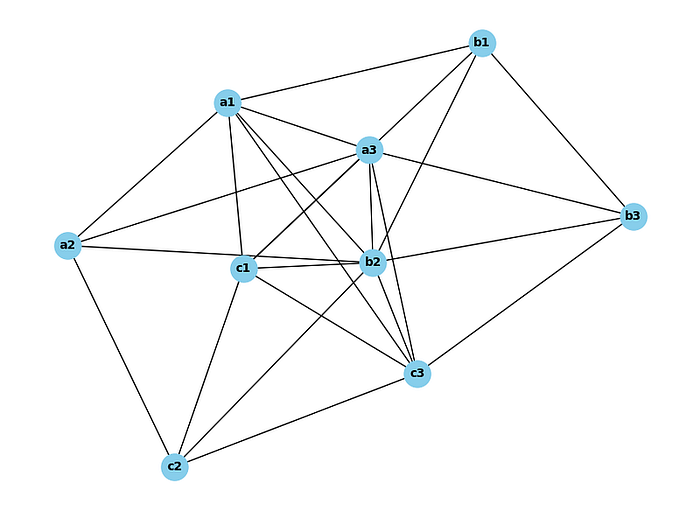
Network Graph Data Modeling — Solving Tic Tac Toe Without the Minimax Algorithm
Author(s): Ashutosh Malgaonkar
Originally published on Towards AI.

Here is how tic tac toe looks.
In order for us to start using any kind of data logic on this, we need to identify the board location first. So, let us figure out a system to determine board location.
We will call the columns a,b, and c, and the rows will be numbered 1,2,3
Let us build this out in a quick dataframe, so we can understand what I mean.
Open a notebook at: Welcome To Colaboratory — Colaboratory (google.com)
Insert this code into a cell to build out the locations:
import pandas as pddf = pd.DataFrame({'a': [1,2,3], 'b': [1,2,3], 'c':[1,2,3]})df.head()
This is how the dataframe will look. As you can see, it is a matrix. The first row will be a1, b1 and c1, and the second a2,b2,c2 and third will be a3,b3,c3.
This refers to the locations on the tic tac toe board exactly, except now we can refer to this and code the moves.
Convert these to a string:
df['a'] = 'a' + df['a'].astype(str)df['b'] = 'b' + df['b'].astype(str)df['c'] = 'c' + df['c'].astype(str)
Now that I have locations, we can go ahead and use networkx. First, we will install it.
!pip install networkx
Now let us ask the question: why are we installing Networkx? What is the purpose of this… Read the full blog for free on Medium.
Join thousands of data leaders on the AI newsletter. Join over 80,000 subscribers and keep up to date with the latest developments in AI. From research to projects and ideas. If you are building an AI startup, an AI-related product, or a service, we invite you to consider becoming a sponsor.
Published via Towards AI
Take our 90+ lesson From Beginner to Advanced LLM Developer Certification: From choosing a project to deploying a working product this is the most comprehensive and practical LLM course out there!
Towards AI has published Building LLMs for Production—our 470+ page guide to mastering LLMs with practical projects and expert insights!

Discover Your Dream AI Career at Towards AI Jobs
Towards AI has built a jobs board tailored specifically to Machine Learning and Data Science Jobs and Skills. Our software searches for live AI jobs each hour, labels and categorises them and makes them easily searchable. Explore over 40,000 live jobs today with Towards AI Jobs!
Note: Content contains the views of the contributing authors and not Towards AI.














